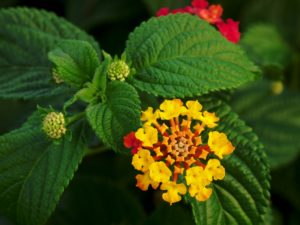
No studies have documented extinction of a native plant species caused by invasive ones. This has led to questions about whether invasive plants have truly significant impacts. (Of course, species extinction is not the only important impact).
These questions have been answered in a recent article by Paul Downey (of the Institute for Applied Ecology, University of Canberra) and David Richardson (of the Centre for Invasion Biology at Stellenbosch University, South Africa). A link to the article is provided at the end of this blog.
Downey and Richardson argue that studies have documented instances of invasive plant species putting native plants on the path – or trajectory – to extinction. Furthermore, plants go extinct more slowly than animals, often over centuries. As result, current approaches to analyzing impacts of invasive plants underestimate the damage that non-native species cause because they assume extinction will not result.
The authors name six “thresholds” along the trajectory to plant extinction. Each is affected by invasive plants:
- Plants die more quickly than they can be replaced by their offspring in some locations.
- Plants disappear from some locations entirely, but seeds or spores remain that could regenerate a new cohort of individuals.
- Some locations lose both individual plants and their propagules. This is a local extinction.
- The last locations hosting a species lose their individual plants, but in some places seeds or spores remain in the soil.
- The species is entirely lost in the wild with no individuals or propagules. The only survivors are held in botanic collections.
- Extinction. The remaining plants are lost, and the remaining seeds or spores are no longer capable of becoming new plants.
By focusing purely on full extinction — step six — plant conservationists lose sight of the threats to species as they occur and accumulate at each stage of the process. Without such attention we fail to act on opportunities to protect the species and counter the wider impacts of its disappearance.
Downey and Richardson note that plant invasions affect each component of a plant species’ population dynamics: fecundity (seed production); death; immigration; and emigration (dispersal). Yet they could find no studies that have explored the effects of alien plants for all four components collectively.
A second explanation for scientists’ not documenting any extinctions caused by invasive plants is that it is extremely difficult to prove that every last individual or propagle of a plant species is dead . Many plant species have long-lived seed banks in the soil, or can regenerate from underground structures – so it is hard to know when that species is truly gone. This is especially true since seed banks are rarely monitored.
Furthermore, many of the conditions needed to demonstrate that alien plants have caused the extinction of native plant species have either not been measured, or have been examined for too short a time. The IUCN definition of extinction requires that data be collected over “a period that is appropriate for the life cycle of the species” (IUCN. 2014. Guidelines for using the IUCN Red List categories and criteria. Version 11. Prepared by the Standards and Petitions Subcommittee. Switzerland). Given the long persistence of plant species, the “appropriate period” exceeds the timeline almost all of even the few long-term studies in invasion ecology.
Downey and Richardson say that relying on changes in species richness to assess the impacts of alien plants will not adequately predict or describe the effects of invasion. Such analysis especially will not provide evidence for a species crossing from Threshold 1 to 2 or 3 . Indeed, they assert, collective species richness measures could mask losses of some species in instances where additional species are also recorded (i.e. the losses are off-set by additions).
The authors have found abundant evidence of invasive plants driving native plants along this extinction trajectory. They cite several examples of an invasive plant causing a “threshold effect” – that is, increases in alien plant cover or density result in decreased native plant species diversity or richness. They define this as the native species crossing from Threshold 1 to 2. Among the examples provided are several species in Australia and New Zealand and Lonicera maackii in the United States.
The authors also provide examples of species causing “extinction debts” – that is, a significant time lag between the introduction of an alien species initiating a native species’ movement along the trajectory and its actual extinction. One mechanism is by reducing native plants’ seed production. Again, Lonicera maackii is cited.
Downey and Richardson also note the potential downsides of invasive plant control measures.
In the end, the authors urge that scientists “… shift attention away from the end point of the extinction trajectory … to give due consideration of the full series of processes that drive declines of populations of native species.”
As Richardson has said in an interview with Oxford University Press, “… There is absolutely no doubt that alien plant invasions are eating away at native plant biodiversity. Many native plant species — probably HUNDREDS of species — are precariously close to being functionally extinct and survive as the ‘living dead’.’”
Source: Downey, P.O., D.M. Richardson. 2016. Alien plant invasions and native plant extinctions: a six-threshold framework. AoB Plants, 2016; 8: plw047 DOI: 10.1093/aobpla/plw047 ; open access, available at http://aobpla.oxfordjournals.org/
Posted by Faith Campbell